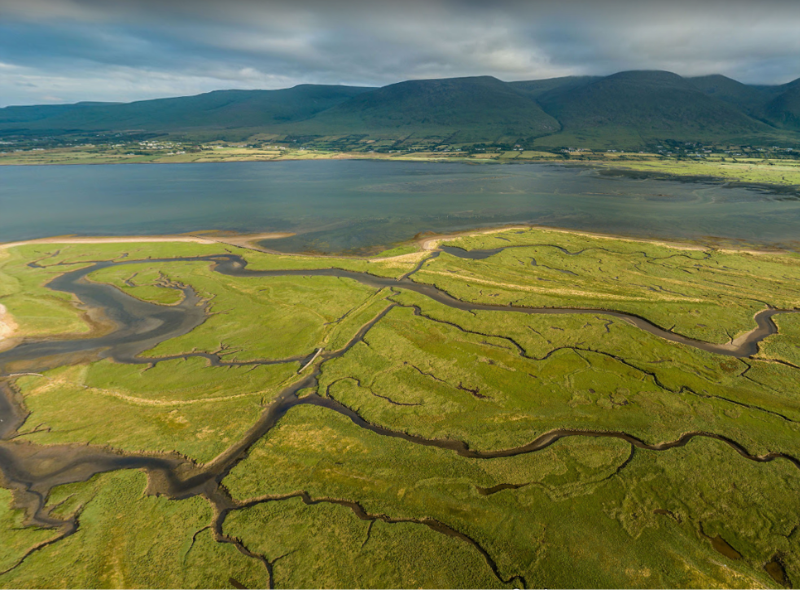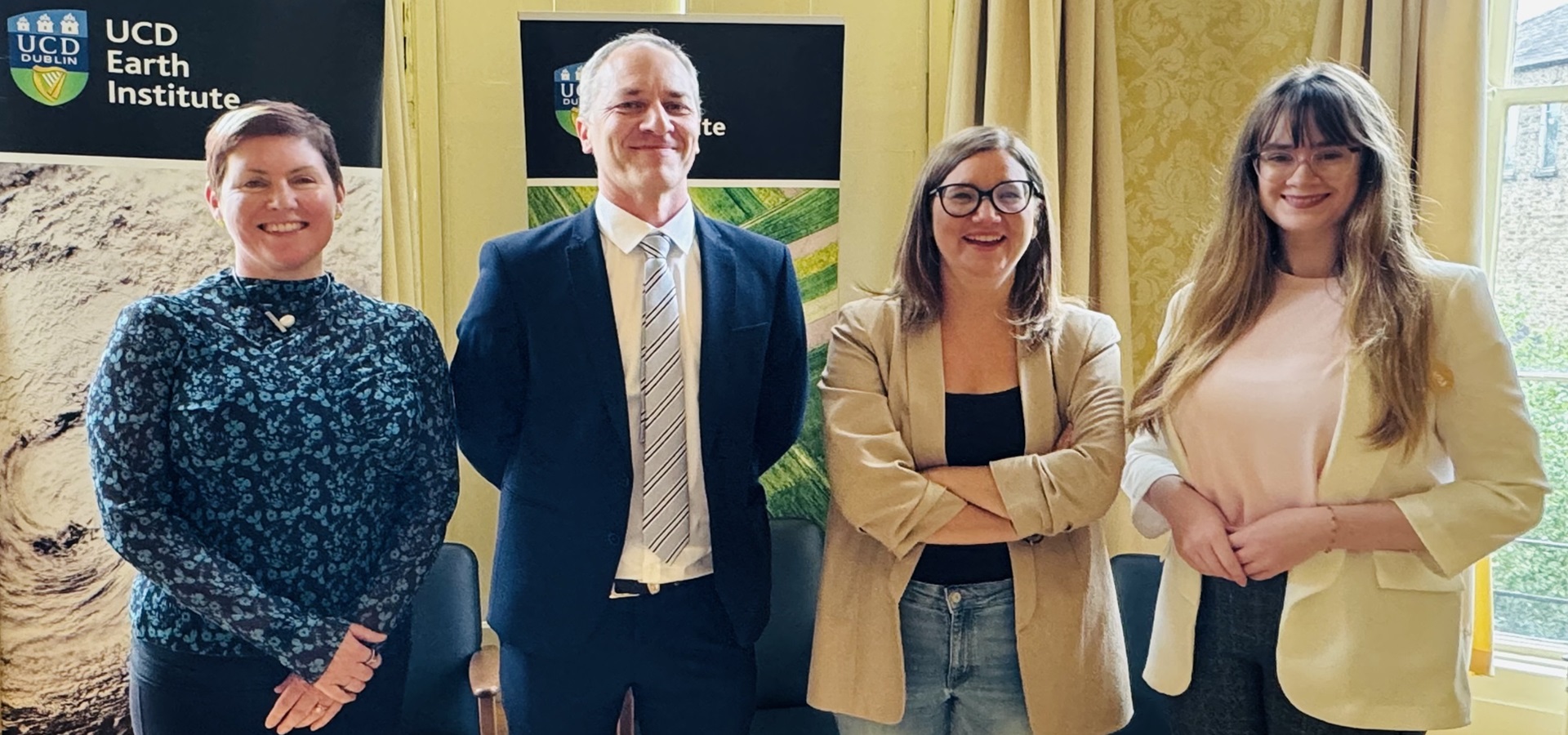Earth Institute Launches Earth Comment Series on Environmental, Climate, and Sustainability Issues
We are delighted to announce our new Earth Comment series, a new platform offering expert commentary, opinion and insights on key environmental, climate, and sustainability issues. This initiative aims to enhance public understanding by featuring contributions from leading experts in the Earth Institute.
Saltmarshes: Hidden Champions of Climate Action

Derrymore Saltmarsh Co Kerry
Dr Grace Cott (UCD School of Biology and Environmental Science) opens the series with her article, "Saltmarshes - Much More Than Meets the Eye." Grace explores the ecological significance of saltmarshes, often dismissed as unproductive lands. Contrary to common perception, she explains, these coastal habitats play a crucial role in mitigating climate change by efficiently sequestering carbon. Per unit area, saltmarshes can store up to ten times more carbon than terrestrial forests. Additionally, saltmarshes act as natural buffers against coastal erosion and storm surges, contribute to water purification, and support rich biodiversity.
Saltmarshes’ ability to adapt to rising sea levels by migrating inland, provided there are no barriers, further underscores their importance in climate adaptation strategies. Grace Cott advocates for the conservation of these vital ecosystems to maintain their role as carbon sinks and protect their biodiversity.
About Dr Grace Cott: Dr Grace Cott (UCD School of Biology and Environmental Science) is a coastal wetland ecologist. Her research focuses on examining the dynamics of coastal ‘blue carbon’, that is the carbon sequestered in vegetated coastal habitats, specifically tidal marshes, seagrass beds, and mangrove forests. Nitrogen plays a key role in regulating the global carbon cycle. She is interested in understanding the interaction between rising atmospheric carbon dioxide and nitrogen availability in predicting these ecosystems’ potential for carbon storage. Her postdoctoral studies at the Smithsonian Environmental Research Center, Maryland, USA and University College Cork funded by Marie Skłodowska-Curie Actions Programme and the Irish Research Council allowed her to investigate the degree to which organic nitrogen regulates the response of coastal wetland plants to climate change.
Airflow and Architecture: Fluid Dynamics in Modern Engineering
 |
|
A photograph of Jennifer at the mid-span of the Golden Gate bridge in San Fransisco – demonstrating how think the cables are. |
Dr Jennifer Keenahan (UCD School of Civil Engineering) contributes the second Earth Comment article, "Airflow and Architecture: How Fluid Dynamics Shapes Our Skylines." Jennifer discusses the critical role of fluid dynamics in engineering, particularly for structures exposed to natural forces such as wind and water. She highlights how fluid dynamics principles are essential for the design and safety of bridges, citing historical failures like the Tacoma Narrows Bridge collapse as stark reminders of the risks involved.
Jennifer explains how modern engineering uses tools such as wind tunnel testing and computational fluid dynamics (CFD) to predict and mitigate wind effects on structures. These innovations help ensure the safety, stability, and resilience of bridges and other elements of the built environment, especially as climate change intensifies natural forces.
About Dr Jennifer Keenahan: Dr Jennifer Keenahan (UCD School of Civil Engineering) is an Associate Professor in the School of Civil Engineering at UCD. Her PhD assessed methods of detecting damage in bridges using sensors installed on a passing vehicle. Following this, she practiced as a bridge and wind engineer at Arup and worked on a variety of national and international projects.
Contributions
The Earth Institute Comment series is a mixture of opinion editorial-style and research ‘explainer’ articles intended for a general and informed audience who would like to learn more about the work of UCD researchers working in environmental, sustainability, and climate research as well as practical and policy applications. Articles are around 700-800 words written in friendly, accessible language and avoiding jargon and acronyms and include two or three high-resolution images. Email earth.institute@ucd.ie to find out more or submit a contribution.
Further Information
Saltmarshes - Much More Than Meets the Eye by Dr Grace Cott
Airflow and Architecture: How Fluid Dynamics Shapes Our Skylines by Dr Jennifer Keenahan

